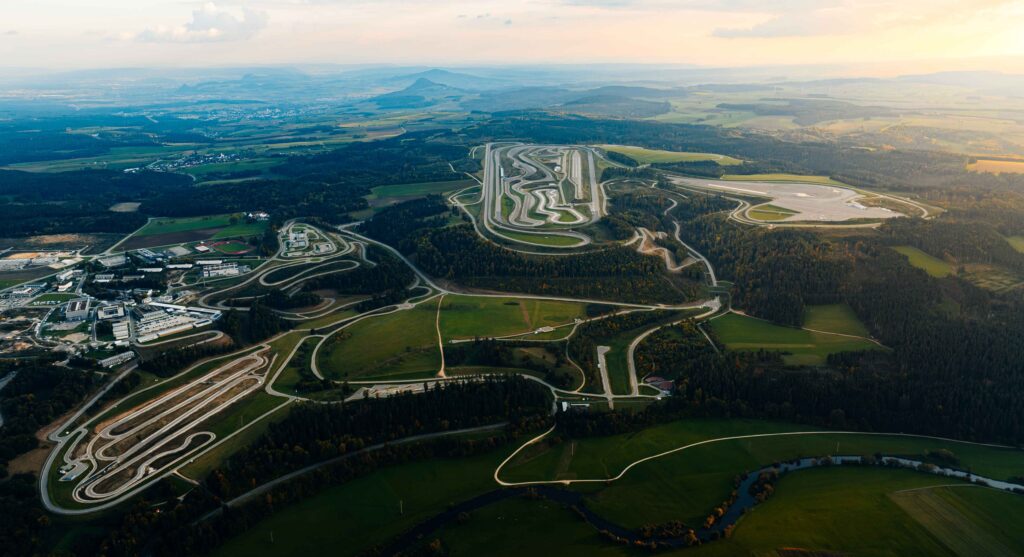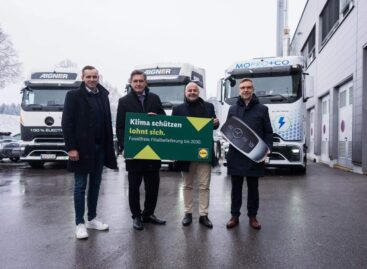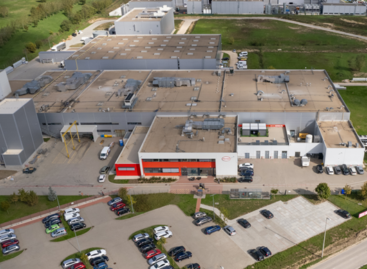Mercedes-Benz opens Europe’s most modern lighting test center
The facility in Immendingen, Baden-Württemberg, has been one of Mercedes-Benz’s most important test tracks for 10 years. The 530-hectare complex has now been expanded with a unique light test center, which was built over two years and cost 10.5 million euros. The track, which can simulate all kinds of traffic situations and visibility conditions, is now also specifically suitable for designing and testing the headlights of the future. In addition, sustainability is a reality here: the sprawling vegetation is kept in check by sheep, and the herd is guarded by llamas.
 Immendingen, located an hour’s drive from the center of Stuttgart, has been home to the Mercedes-Benz track for 10 years, where the group’s innovations are tested. The expansion of the center will allow Mercedes-Benz headlights to be tested in almost the entire range of real-life situations: in bright daylight and twilight, on shiny wet asphalt and in light-polluted urban environments, on mountain bends and on cobblestone roads.
Immendingen, located an hour’s drive from the center of Stuttgart, has been home to the Mercedes-Benz track for 10 years, where the group’s innovations are tested. The expansion of the center will allow Mercedes-Benz headlights to be tested in almost the entire range of real-life situations: in bright daylight and twilight, on shiny wet asphalt and in light-polluted urban environments, on mountain bends and on cobblestone roads.
The investment is worth 10.5 million euros and took two years to complete. The heart of the center is a 135-meter-long, realistic highway section, on which up to five cars can be tested at the same time, while oncoming and preceding traffic can be simulated. The asphalt mixture has been specially developed to reproduce the reflection of worn pavement as faithfully as possible. Signal posts can be adjusted every 20 meters along the road, and pedestrian figures can be placed anywhere.
An “artificial sun” is used to fine-tune the sensors: high-power, mobile light sources – which are also used on Arctic ships to detect icebergs – can reproduce low sun positions or extremely bright light even in cloudy weather and twilight. Special systems can also generate heavy rain and splashing water.
Immendingen, where innovations are tested
The construction of Immendingen began ten years ago on the foundations of a former military base. Mercedes-Benz invested 200 million euros in the project from the laying of the foundation stone to the opening, and has since invested a further 200 million euros in the expansion. The test complex was designed according to the principles of reproducibility, efficiency and sustainability. Since the facility opened, around 30,000 test vehicles have covered more than 100 million kilometers here – a distance equivalent to circling the Earth about 2,500 times.
Around 80% of the test runs previously conducted on public roads have now moved to the site. The volume of international testing has been significantly reduced while maintaining quality – all of which shortens development time, accelerates vehicle maturity and reduces the carbon footprint of development.
The 520-hectare area consists of more than 30 modules, with a total of 86 kilometers of road-simulating tracks and 286 junctions. The network models real-world traffic: complex urban intersections, mountain passes with a difference in elevation of almost 180 meters, poor quality and cobblestone sections, motorways and off-road tracks. Separate routes replicate European, American, Chinese and Japanese road conditions and layouts. The “BERTHA” test area covers almost 100,000 m²; in this, the 1.5 km road network of the “downtown” module offers various intersection scenarios for realistic testing of driver assistance systems, but there is also a mountain pass with a gradient of up to 16% and serpentines, a three-lane oval track with banked corners, and special sections with gradients of 30–100%. Up to 400 vehicles can run simultaneously in the various programs.
During the busiest periods, the core team of 250 can be joined by 2,100 colleagues from other plants for on-site testing. The infrastructure is in line with this: more than 100 charging points for electric vehicles and 12 fuel stations for internal combustion vehicles, LTE-based route guidance with collision warning system, a fully equipped company fire department with its own ambulance service.
On the automated “Heide” circuit, vehicles are guided by fully autonomous driving robots on a particularly poor quality road. Potholes, bumps and cobblestones put extreme strain on the chassis and body. The automation of the process increases the precision of the maneuvers, reduces the workload of the human test drivers and significantly speeds up the tests. Depending on the vehicle type, up to 6,000 kilometers are covered on this circuit, which corresponds to around 300,000 kilometers of real-world use – i.e. one “Heide kilometer” is equivalent to around 50 kilometers of extremely poor road quality. The name refers to the notoriously poor quality road section of the Lüneburg Heath, known since the 1950s.
Related news
Too many gifts, too much food: our holiday excesses are putting a serious strain on the environment
🎧 Hallgasd a cikket: Lejátszás Szünet Folytatás Leállítás Nyelv: Auto…
Read more >Lidl Austria Expands Electric Supply Fleet
🎧 Hallgasd a cikket: Lejátszás Szünet Folytatás Leállítás Nyelv: Auto…
Read more >Henkel: 3,000 accident-free days
🎧 Hallgasd a cikket: Lejátszás Szünet Folytatás Leállítás Nyelv: Auto…
Read more >Related news
The New Year’s Eve fireworks fair is back: temporary sales will start in department store parking lots at the end of December
🎧 Hallgasd a cikket: Lejátszás Szünet Folytatás Leállítás Nyelv: Auto…
Read more >The first Eastern European non-alcoholic beer turns 50
🎧 Hallgasd a cikket: Lejátszás Szünet Folytatás Leállítás Nyelv: Auto…
Read more >Sausage: pork prices are already going down, but they won’t be cheaper in stores – a significant correction may come in the spring at the earliest
🎧 Hallgasd a cikket: Lejátszás Szünet Folytatás Leállítás Nyelv: Auto…
Read more >






